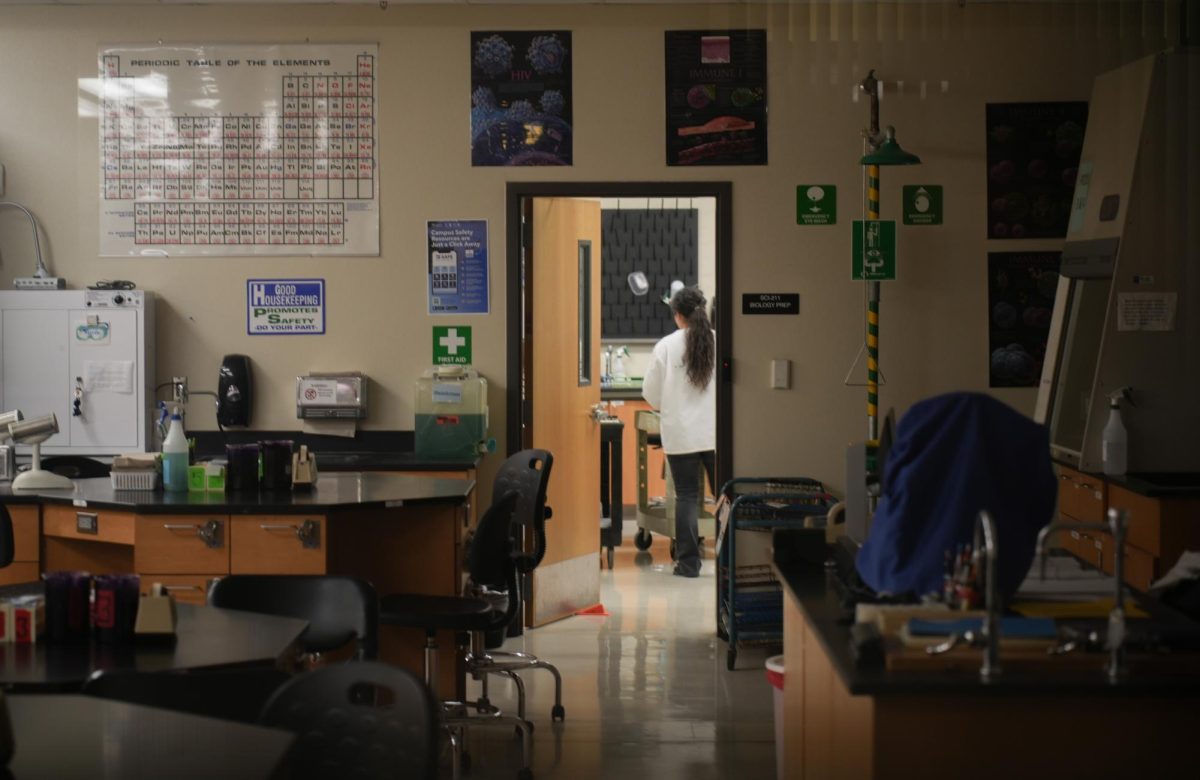Pre-health occupations students at Cosumnes River College have the unique opportunity to work with human cadavers in select classes.
The cadavers used at CRC come from the University of California Davis Body Donation Program, said Tamyra Carmona, a biology professor at CRC who leads cadaver acquisition and care.
CRC is one of three Los Rios Community College campuses that use cadavers in their science programs, along with American River College and Folsom Lake College.
“I point out to my students that getting this opportunity as an undergraduate student is phenomenal,” Carmona said. “There aren’t a lot of institutions that provide that option until graduate school.”
Donors don’t have control over which institutions receive their donations, and “responsible parties cannot designate the uses to which the body will be put, nor the persons or entities that will use the body,” according to the body donation program’s application.
Biology Professor Sarah Pollock emphasized the care taken to ensure the specimens are treated with dignity.
“When I talk to my students, I make it very clear that we have been given a gift to be able to study human bodies in three-dimensional form,” Pollock said. “Which is something we should value and be respectful of.”
CRC receives its specimens for three-year terms, with the option for two additional one-year extensions.
“Our goal on our campus is four years,” Carmona said. “And then once they are returned to UC Davis, they come and pick them back up and UC Davis does a memorial service.”
Carmona said there’s an approval process institutions must go through to ensure cadavers will have the proper care and resources. One of the main requirements is having a lockable, temperature-controlled room to store the remains.
“There’s all sorts of rules about even getting the specimen,” Carmona said. “And then we are inspected once a year by the UC Davis Donated Body Program also to make sure we’re following protocols.”
Cadavers are not used in general education classes, meaning only students enrolled in a pre-health major, such as nursing, study with them in their courses.
Pollock and Carmona said the benefit of using human cadavers is that they offer a more realistic way of analyzing human anatomy compared to other methods of study.
“When you’re learning on models or charts, you do not learn three-dimensional anatomy as effectively,” Carmona said. “You can’t peel back layers, and you can’t see the relationship between structures as effectively as when you can actually physically move material.”
Some modern alternatives to using human cadavers include printed models and computer programs that allow students to see the body deconstructed virtually, Carmona said.
Anne Diolazo, a pre-nursing major, said the cadavers helped further her knowledge of the human body in a way most alternatives can’t.
“It’s one thing to learn about all your bodily systems and trying to imagine what they look like and how they function,” Diolazo said. “But it’s a completely different thing to be able to see it on somebody.”
Carmona said cadavers aren’t brought into the classroom until over halfway through the semester, allowing students to prepare by learning proper procedures first. The specimens are usually studied around three to four times per term.
After being used for research, the remains are cremated before being “scattered or interred in a manner consistent with state law,” according to the program’s website.
All human remains used in the program come from adults who voluntarily donated their bodies to UC Davis for medical research and education. The donors’ identities and personal information are protected from the institutions they’re given to, according to the program’s website.
“I think a lot of the students’ response depends on how it’s presented by the instructor,” Carmona said. “So I think if you prepare your students adequately, then it’s not shocking and upsetting, it’s an opportunity to learn.”

